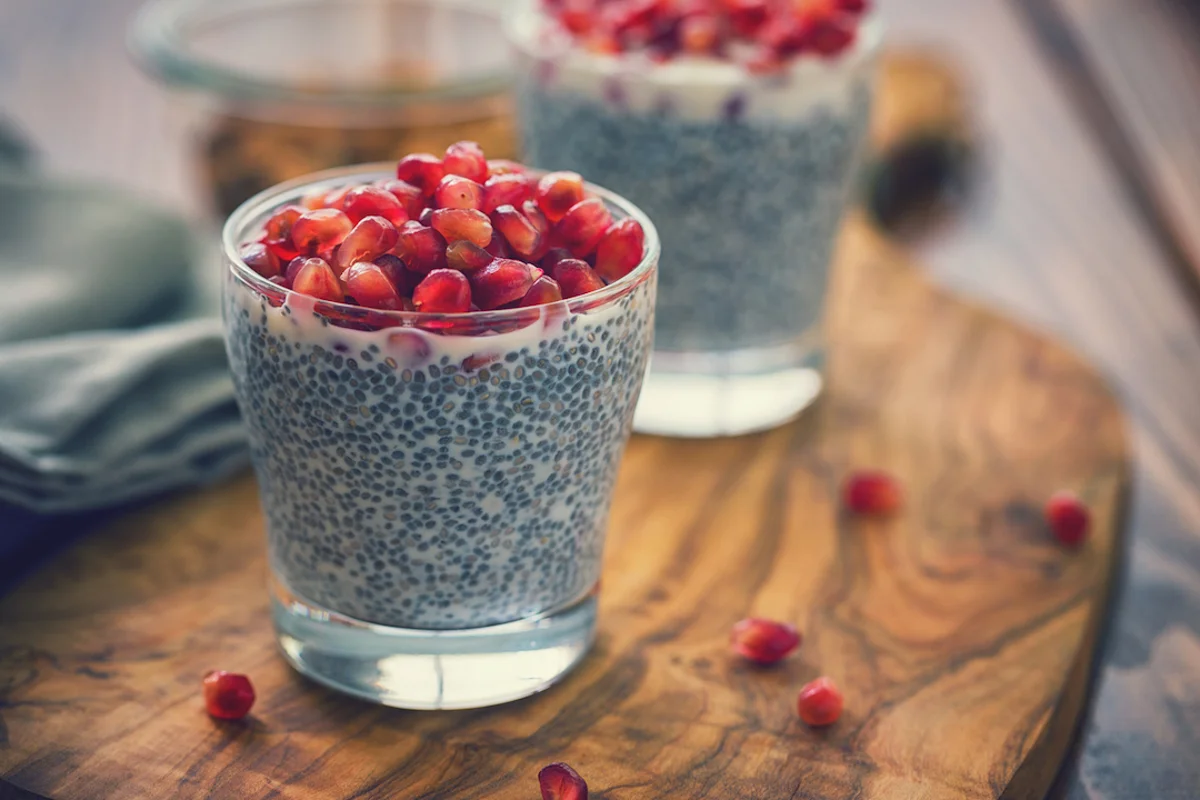By Zoe Griffin
We all know that there’s no substitute for a balanced diet. While fancy supplements can top up your vital nutrients, certain superfoods have far more power to give you a huge bioavailable boost of what your body needs. Enter chia seeds.
Rich in omega-3 fatty acids and essential minerals like potassium, calcium, magnesium and iron, these small seeds offer huge benefits to the body. They’re beloved by nutritionists and health influencers and are often the subject of viral health trends on TikTok – you might have spotted the “internal shower” trend, which promises to “flush” the digestive system with the help of chia seeds, water and lemon juice.
Once a staple of ancient civilisations like the Aztecs and Mayans, chia seeds have now earned their place in the store cupboards of homes across the UK. They’re the perfect addition to smoothies, puddings and porridge and have the power to supercharge our diets.
“Chia seeds are nutritionally packed,” explains Valentina Cartago, who goes by the moniker The Italian Nutritionist. “Adding chia to your meals is an easy and quick way to increase their nutritional content.”
Chia seeds come from a herbaceous plant called Salvia Hispanica L., which originates in southern Mexico and northern Guatemala. “They seem so small, but don’t let them fool you – they are packed with fibre,” explains Cartago.
You might have seen them sprinkled on top of breakfast foods, in cakes and bread and chia puddings – they’re incredibly versatile. Some people also choose to soak them in water to create a gelatinous frogspawn-like mixture and drink this with no added flavourings or ingredients.
However, it’s important to note a few things about chia seeds before you dive in and start adding them to every meal. These seeds are small when dry, but they naturally swell up when they come into contact with water. This means eating them dry can cause them to swell in your stomach and cause bloating. The high fibre content can also affect your gut if you aren’t used to eating a lot of fibre.
“Due to their ability to quickly swell after absorbing a liquid, it is advisable to consume chia seeds that have been soaked in a liquid or moist food, such as yoghurt or oatmeal, rather than dry, especially if someone suffers from swallowing problems (dysphagia),” says Cartago.
Chia seeds are a source of fibre, Omega-3 fatty acids, antioxidants, protein, vitamins and minerals, according to Cartago. For something so small, they really are a nutritional powerhouse.
Cartago explains that 100g of chia will provide your body with 17g protein, 34.4g fibre, 63.9 per cent linolenic acid (a polyunsaturated Omega-3 fatty acid), 335mg of magnesium, 631mg of calcium, 8.83mg of Vitamin B3 and 27mcg of caffeic acid (a natural antioxidant).
Research suggests that thanks to their nutrient content, chia seeds can offer health benefits such as reducing the risk of heart disease and diabetes and promoting a healthy digestive tract. Chia is also a great source of bioavailable amino acids, which many modern diets and plant-based diets lack.
Cosmetic dermatology doctor Dr Simon Ourian MD explains that, “beyond supporting overall wellbeing, certain foods can have a direct and visible impact on the health and appearance of our skin, chia seeds being a great example. These tiny seeds are rich in Omega-3 fatty acids, which help reduce inflammation, calm irritation, and support a smoother, more hydrated complexion. They’re also loaded with antioxidants that combat free radical damage, contributing to a brighter, more youthful glow.”
If you’re not that adventurous in the kitchen and don’t like the idea of making complicated dishes to meet your nutritional needs, chia seeds can be used as a topping to boost dishes you know and like. They contain very little flavour and attract moisture depending on what kinds of foods you add them to.
Cartago tells us that adding chia to meals is an easy and quick way to increase their nutritional content. A serving of 2 tbsp (28g) offers 4.7g of protein, 8.7g of fat, 11.9g of carbohydrate and 9.8g of fibre.
“These seeds become gelatinous when in a liquid,” she adds. “Therefore, they could help to bulk stools, promoting regular bowel movements, key for anyone suffering from gastrointestinal issues such as constipation.”
“Chia seeds bring additional benefits as a source of fibre, protein and healthy fats. While some may find the texture of hydrated chia seeds slightly gummy, this can be mitigated by blending them well or soaking them beforehand,” says Dr Ourian.
“I suggest starting with a small amount –1 to 2 teaspoons – and adjusting to your preference. If you’re sensitive to texture, soak the chia seeds in a portion of your smoothie liquid, like almond milk or yoghurt, for 10-15 minutes before blending. It’s a simple addition that can deliver real results from the inside out,” he adds.
Want more health food insights? We take a deep dive into the benefits of cod liver oil
